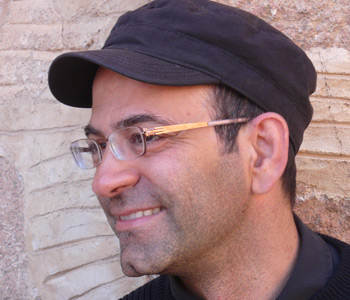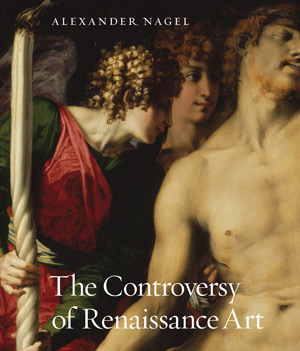
This book puts Italian art of the period 1490-1540, in the context of the religious controversy that dominated the era.
This is the period before the Council of Trent, before the Counter Reformation. It runs parallel to the reformations of the North, before it had become certain that those movements would actually split from the church, a period when many people in Italy, including intellectual leaders and prelates, as well as artists, shared many of the concerns of the Protestant reformers. I call it the period of “experimental reform” in Italy.
The difference between what happened in Italy and what happened during the northern European reformations is that the Italians could not give up on the art. Whereas in the North one sees either outright destruction of images or a tolerance of images under careful doctrinal control, in Italy artists and reformers, despite their concerns, continued to believe that art could perform an important, transformative religious function.
Reformation questions led to radical aesthetic experimentation. Those questions were fundamental ones. What is an image? Do images have a role in religion? What role have they played in the past? Does an image derive its authority from the artist or from the institution that it serves or from the sacred subjects it portrays? Is there one medium that is better suited to Christian art than others? That is, is mosaic more holy than painting? Is painting less reliable than sculpture? Is the classical dignity of statuary an advantage or a revival of ancient paganism? What is the relation of images and architecture? Did the first churches have images?
Italian art of this period offers many extremely interesting answers to these questions—answers that unfold within painting, sculpture, and architecture, and correspond to the three sections of this book.
“Classicism, a new monumentality, and the most sophisticated pictorial developments were not the hallmarks of a new secular art so much as the primary means used to reform religious art.”
The Italian Renaissance has always been understood as the foundation of European art. The entire artistic tradition through Picasso stems from the extraordinary achievements of early 16th century artists.
Traditionally, this period has been presented as one of classical harmony and aesthetic resolution. And yet it is also universally acknowledged that the classical balance of the art of the first two decades of the 16th century—the art of Raphael, early Michelangelo and early Titian—was quite soon disrupted by the advent of what we call Mannerism.
If it was so stable, then why was this art so quickly succeeded by an art of unnatural contortions, non-perspectival space, convoluted compositions, and obscure meaning? Perhaps the extraordinarily compelling visions of the first two decades of the 16th century were just that—visions, stunning and short-lived efforts to create order that were then quickly succeeded by a more unstable and heterodox art.
Another traditional view is that this was the period that saw the emergence of a secular art out of a traditional, religious past. This view doesn’t hold up either. Most of the art of this period was religious, and it was not grudgingly undertaken by the artists simply to fulfill commissions and earn money.
In their religious works, Raphael, Michelangelo, Titian and the other major artists of the period were attempting to join the highest ambitions of art with the most exalted aims of religion. They developed some of their most innovative ideas in their efforts to resolve what they saw as major, epochal challenges to the integrity and legitimacy of religious art.
All of them believed that religious art could not continue in the way it had been made and promoted by previous generations. Something had to change, and they offered radical proposals for such changes.
The proposals included a new mode of visionary altarpiece, developed by Fra Bartolommeo and Raphael, a new mode of antique-inspired Christian statuary, developed by Andrea and Jacopo Sansovino and Michelangelo, and complete re-orderings of church space in such a way as to focus attention on the high altar and the Eucharist—a development that affected many major cathedrals and smaller churches throughout Italy.
Classicism, a new monumentality, and the most sophisticated pictorial developments were not the hallmarks of a new secular art so much as the primary means used to reform religious art.
All this reveals an art that was not simply progressivist, forward-looking and secular, but instead self-questioning, complex, and at its most innovative when engaged in a retrospective investigation of Christian art. This view of Renaissance art perhaps speaks to our era even more forcefully than the traditional one did.
There is a short section devoted to the painting reproduced on the book’s cover, which is Rosso Fiorentino’s Dead Christ (1527), a very strange painting and nothing less than a reinvention of the purpose of painting. It never made it to its destination, the town of Borgo San Sepolcro, staying in Rome instead and eventually entering a collection.
The picture gives us the unusual subject of Christ within the tomb, after the Entombment but before the Resurrection. We see inside the tomb and witness a vigil held by angels over the body of Christ. Everything about this picture is strange and ambiguous. Christ’s eyes are closed but he doesn’t seem quite dead, or dead any longer. That right arm touches the leg and knee, but can we say that it is resting on them?
Christ is presented emphatically nude, and yet no male genitalia are visible. He sees distinctly feminized. The candles held to either side by the angels are not aflame; instead, they give off thick plumes of smoke even as the embers glow. The light in the painting is not produced by the candles but instead enters from the left foreground, reflecting sharply against Christ’s shins. The blowing smoke lifting from the candles indicates that a gust of wind has entered with the shaft of light. The angels’ vigil is over, the stone has begun to roll away, and we see Christ coming alive with the dawn. Christ’s form seems to light up together with the candles; his body twists in the same direction as their coiled shafts and his head reaches to exactly their height. As the candles catch fire, his head tilts back, throwing up his flame-like red hair.
In Rosso’s interpretation, the beautiful body that is emerging from this process is androgynous, as if purified to a pre-gendered state—that is to say, the original state of humanity as understood by a long tradition of Platonic, Christian and Kabbalistic interpretations of the origins of humanity. Christ, the new Adam, returns in this pristine form. The conception of the transfigured body extends to the entire painting. Passages of overt carnality, such as the angel’s hand delicately palpating Christ’s vulvalike side wound, inhabit a space that is compressed, ambiguous, and unplotted.
Spatial ambiguities abound: do those candles stand on the ledge of the sarcophagus or do they reach the ground? To which angel does that palpating hand belong? This subtle space behaves less like the external world than the mutable and polymorphous mental space of the imagination, or what was called in Rosso’s period the fantasia, which was understood as a chamber in the brain into which images from the outside world were projected and fluidly combined.
Now, at the far end of a history of perspective and even as perspective is relinquished, this painting projects the malleable, volatile, internal world of the imagination. It is unusual for a painting to insist so strongly on its status as the projection of an internal psychic space, and it is not surprising that the result should be imprinted with special personal identifications, visible residues of the fact that this projection originated, first of all, in the artist’s fantasia. They called him Rosso because his hair was red, like his Christ’s.
“In Rosso’s interpretation, the beautiful body that is emerging from this process is androgynous, as if purified to a pre-gendered state—that is to say, the original state of humanity as understood by a long tradition of Platonic, Christian and Kabbalistic interpretations of the origins of humanity.”
I want people to experience once again just how experimental and radical Renaissance art was!


Alexander Nagel received his M.A. and Ph.D. from Harvard University. His first book, Michelangelo and the Reform of Art, was awarded the Renaissance Society of America’s Phyllis Goodhart Gordan Prize for “the best book in Renaissance studies.” He has published three other books and many articles on various aspects of art from the Middle Ages to the present, and is also an active critic of contemporary art. Alexander Nagel is a Professor at New York University’s Institute of Fine Arts.